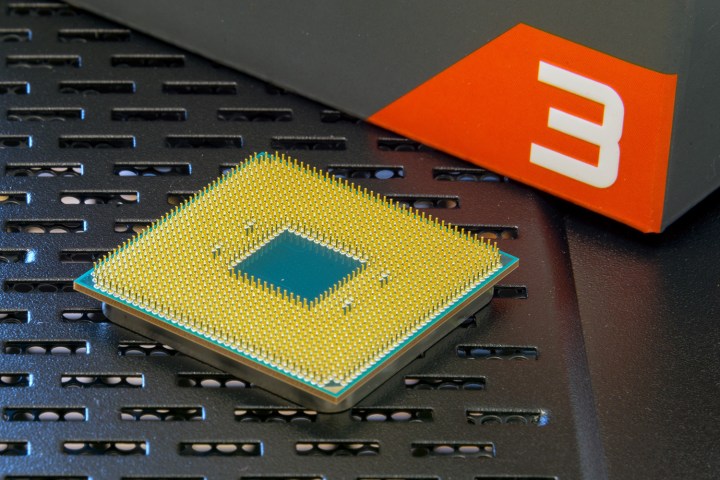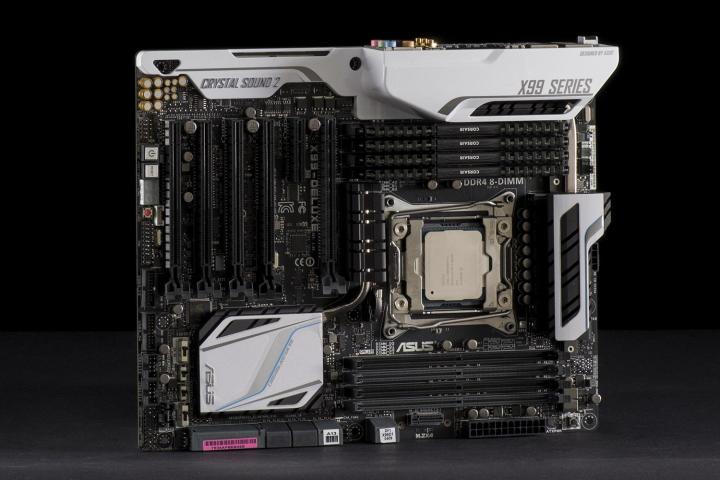For decades, overclocking has been the telltale mark of a PC enthusiast. Even with immeasurable performance leaps in computing hardware, the idea of squeezing every drop of performance out of even the best CPUs remains. But should you still need to overclock your CPU?
The leaps in computing power have also brought more tools for overclocking in a safe way, and modern processors even overclock themselves to a degree. In this guide, we’re going to cover what overclocking is, the risks and rewards associated with it, and if the performance gains are worth the effort.
What is overclocking?

Overclocking refers to pushing the clock speed of your processor past its rated limit. Clock speed is the number of cycles your CPU can complete in a second, and it’s measured in hertz. So, a 4GHz processor can complete 4 billion clock cycles per second.
Although clock speed doesn’t directly show how many instructions your CPU is executing, it gives you an idea of the relative number of instructions. All things being equal, a 4GHz processor can complete more instructions than a 3.5GHz one, for example. Due to things like processor architecture, age, and manufacturer, though, that’s not always the case, but it’s a good general rule of thumb and it makes the purpose of overclocking simple. You can overclock to achieve higher clock speeds, which in turn, allows your processor to complete more instructions each second.
Overclocking typically involves the primary processor, though you can also overclock a graphics card/GPU for a boost in graphics processing. There is no one rule in how fast you can speed up a processor, and every overclocking project produces different results. That makes your decision to overclock rather difficult.
Is overclocking worth it? Yes — and no.
Overclocking: Do you need it?
Overclocking can be time-consuming and expensive, especially if you have little experience tinkering with PC components. In addition to changing your multiplier, you may need to alter voltage settings, fan rotation speeds, and other important, fragile fundamentals.
So when you really get down to it, after spending time choosing and buying the right CPU, do you still need to overclock?
Like most things, it depends. Gaming is a big reason to overclock, and depending on the game, it can make a big difference. In games, the CPU is best known for handling A.I. and NPCs, making a fast processor key for grand strategy titles and simulation sandboxes alike.
Your CPU handles more than A.I., though. Spare cores often go to handling simulations, from cloth to explosions, and some games even offload audio processing to the CPU. This division of labor is becoming increasingly common, especially as core counts push higher on consumer processors.
In CPU intensive games like Hitman 3, overclocking can make a big difference, but that doesn’t mean it will. The greatest benefits in games show at lower resolutions, where the GPU isn’t strained as much. As resolutions go higher, games become GPU-bound and show little performance gains from overclocking. Similarly, games that favor more cores over faster cores, such as Cyberpunk 2077, show less of an improvement with an overclocked CPU.
Outside of gaming, overclocking can boost performance in 3D modeling, video editing, and image editing applications, to name a few. Basically, any application that demands a lot from your CPU will benefit, if only slightly, from an overclock.
As with gaming, the same rules apply to other applications. Certain software favors more cores over faster ones, so your mileage will vary from application to application.
With so much variance, it’s easy to question if overclocking is worth it at all. And for many, it’s not. A moderate overclock, one that you can run all day every day, will boost your PC’s performance across the board, but it might not be worth the hassle. With high-end components, moderate overclocks produce marginal performance gains in most cases.
But, it’s basically free performance. If you have a processor that can run 5% faster, you might as well set it up to take advantage of that extra power. Furthermore, if you play a lot of CPU-intensive games or use applications like HandBrake, overclocking can give you a significant performance uplift, even at moderate settings.
In short, you don’t need overclocking, but if you’re running applications that benefit from it, there’s no reason to leave the extra performance on the table. You shouldn’t go too far, though. Extreme overclocking can shorten your component’s lifespan and decrease system stability.
It may void your warranty, too. Some manufacturers, such as EVGA, cover overclocking under the standard warranty. Others, such as Intel, offer optional protection plans that cover overclocking. We don’t want to sound alarmist since moderate overclocking really isn’t all that scary, but be aware that it will likely void any warranties you have.
How much faster are we talking?

Modern processors “overclock” themselves. Intel and AMD spec their CPUs to operate within a range of clock speeds, from the base clock to the boost clock. DIY overclocking pushes processors past their spec, so the sky is really the limit when it comes to how much faster you can make your CPU.
Given ideal circumstances, that is. Heat is the enemy, and as you push your clock speed higher, your CPU will get hotter. There’s a direct connection to how cool you can keep your CPU and how far you can push the overclock. Pushing the 2.9GHz Threadripper 3990X to 4.5GHz is within the realm of possibility for an overclocker using a dedicated setup and actively cooling the processor with liquid nitrogen. Results with a consumer chip inside of a case with an off-the-shelf cooler will be, let’s call them, more reasonable.
Each processor is a little different, so there’s no hard rule for how far you can push yours. However, the improvements should be marginal if you plan on using the overclock every day. In most cases, that usually means between 100Hz to 300Hz faster with adequate cooling. Not sure which CPU is the best? Check out our AMD vs. Intel guide.
What do I need?
What sort of overclocking do you want to try? How in-depth are you willing to go? Here are some important tools so you can judge the work level for yourself.
- The right computer or CPU: You should invest in a CPU — like one of Intel’s K-series or any of AMD’s latest Ryzen CPUs — that supports overclocking. An overclock-friendly motherboard is also important, so don’t go by the processor alone. The newest mod-friendly CPUs and motherboards often come with software that replaces some of the tools listed below. Finally, if you’re buying a pre-built PC, check the system specs before assuming it supports overclocking.
- Data display software: Programs like CPU-Z allow you to glance at the clock speed, see the voltage usage, and other important tracking factors. Downloading one of these tools will make the project much easier while tinkering.
- Stress test software: You must stress-test to ensure your overclocked processor is stable and safe. Prime95, LinX, and AIDA64 can help, though some overclockers prefer to run more than one program and compare the results. Applications like RealTemp are also useful for tracking processor temperatures.
- A heat sink/coolant unit: For serious overclocking, you’ll need a better cooling system installed inside your PC. That may be a larger processor heatsink and additional case fans.
- A laptop or smartphone: These are a must for checking guides, or watching how-to videos while you dive into overclocking for the first time.
How long will it take

Most importantly, the overclocking process depends on how much time you are willing to spend to do it correctly. You can do a quick and janky overclock procedure just by downloading the right software and changing a few settings. However, this may cause a lot more trouble than it’s worth.
A proper and safe overclock requires research beforehand. You may even need to order additional parts, such as a bigger cooler.
After the proper prep work, start implementing basic tests, download the right stress test, and make CPU alterations — these are all relatively quick steps which may only take an hour. Running the stress test, which you should do after every alteration, should take a few hours as it monitors temperature and activity for stability.
The goal isn’t to get the overclock, just an overclock. It’s a process, and you’ll likely spend multiple days nailing everything down. The goal is to get a stable overclock and, from there, push the component higher if you want/can. For some, a moderate overclock is a project that takes no more than a few hours. For others, it may take multiple sessions over the course of weeks or months.
It’s about how deep you want to go. Although research and planning is essential for anyone, you don’t have to continue pushing your processor after you’ve achieved a stable overclock.
Final word: To overclock or not
Overclocking is considerably less risky than it used to be. Still, it takes substantial knowledge and a lot of patience — and it’s not an exact science, either. Your results can vary widely depending on your skill level, materials, and hardware.
While all this added performance can come with some risk, for those that like to push the edge of performance, the world of overclocking can add some fun and excitement to your computing life. Once you learn how to tweak your systems settings and run the necessary stability tests, you may find the overclocking well worth the effort.
Overclocking is exciting but dangerous, as you could brick your processor. Consider your system and budget before overclocking, and learn about the right tools and hardware management to take on such a project.
Overclocking won’t completely transform your CPU’s performance. The main reason to overclock is to improve applications that take up a lot of computing speed.
Our step-by-step guide takes you through how to overclock a CPU if you want to try it out. You might want to also read up on how to overclock your RAM.





